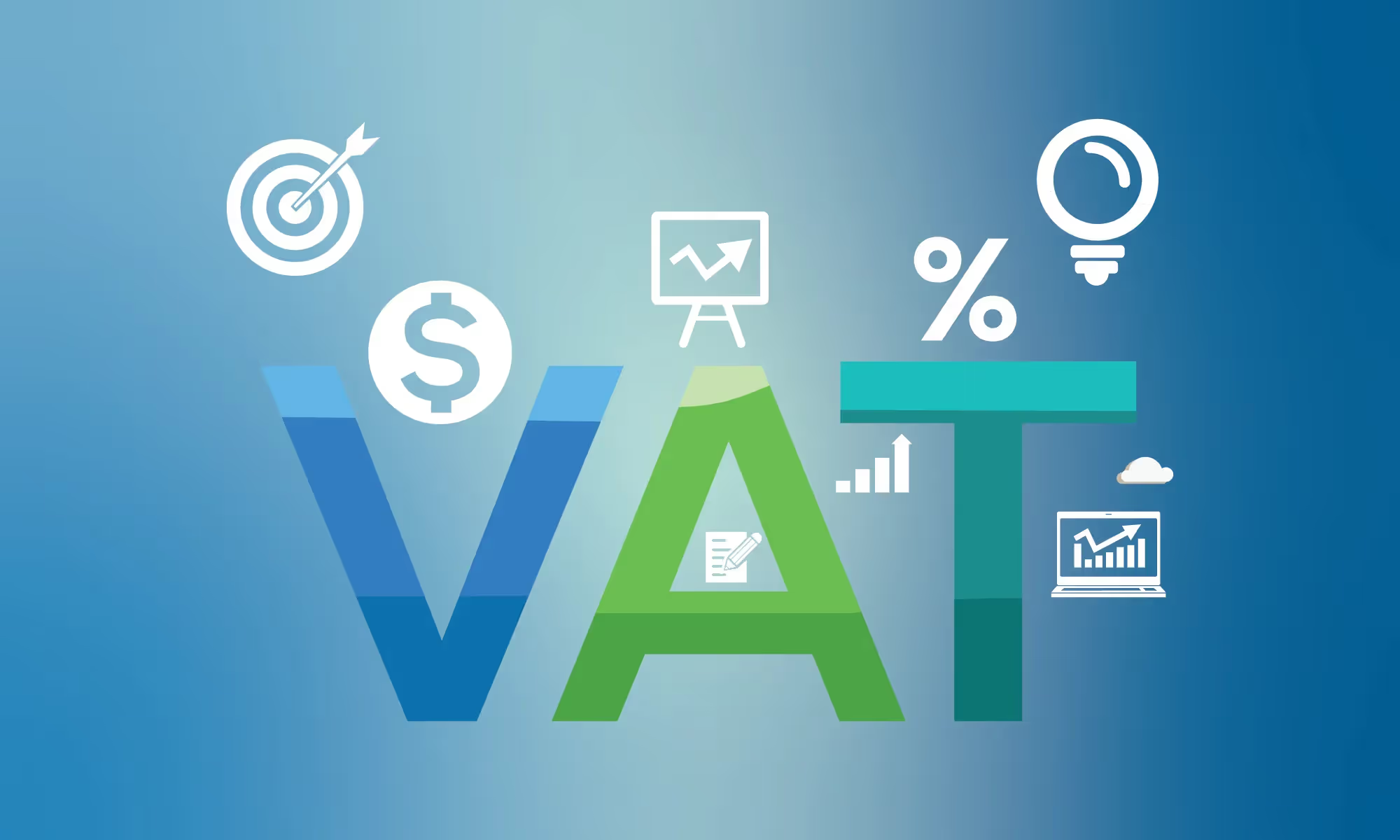The United States, one of the world's largest and most powerful economies, stands out from the crowd from a tax perspective in one surprising way: its lack of a Value-Added Tax (VAT) system. While VAT dominates the landscape in Europe, and over 170 countries in total globally, the US relies on a patchwork of sales taxes administered by US states and local jurisdictions. This article explores the reasons behind this unique approach and the challenges of implementing a VAT system in the US.
If you want to learn more about the similarities and differences between VAT and sales tax, we recommend the previous articles in our series:
- VAT vs Sales Tax: Where the Difference Hides
- VAT vs. Sales Tax: Surprising Similarities You Need to Know
Key Takeaways
The US lacks a federal VAT system due to its federalist system of government, which delegates tax management responsibilities to individual states. Implementing a centralized, nation-level VAT system in the US would require significant efforts to unify diverse tax systems. Currently, there are over 12,000 taxing jurisdictions for sales tax in the USA, creating a complex patchwork of regulations and rates across the country. It would also incur substantial costs and present challenges both to the government and businesses.
What is Value Added Tax?
What is VAT?
VAT is a consumption tax levied on the value added to goods and services at each stage of production and distribution: from the manufacturer to the wholesaler, to the retailer, and ultimately to the end consumer. VAT is collected during the entire supply chain by taxpayers (businesses) on behalf of the government based on the added value and is remitted to the tax authorities at regular intervals.
How does VAT work?
VAT rules impose the tax at each stage of the supply chain while allowing businesses for VAT deduction on their purchases, except for the final consumer. This design ensures that VAT is an economically neutral tax for businesses: it flows through them, regardless of the product's nature or the distribution chain's structure, effectively taxing supplies made to final consumers who ultimately bear the tax's cost.
VAT around the world
The VAT system is a popular form of taxation worldwide: more than 170 countries implemented VAT. It is the primary form of indirect taxation with various VAT rates among the OECD countries and the European Union. Hungary has a 27% standard rate, the highest standard rate in the EU countries, Germany has 19%, while Luxembourg generally has 17% (with a temporary reduction to 16% in 2023). Mexico’s VAT rate is 16%, China’s standard rate is 13%. Most countries have reduced rates in addition to the standard rate.
VAT is also used in countries like New Zealand, Australia, and Canada, where it is known as the Goods and Services Tax (GST).
Why do governments like VAT?
The answer is simple. Since VAT is collected at each stage of the production and distribution chain, the government collects a small tax at each step and gets a consistent and predictable flow of income.
However, with a sales tax, where the total tax amount is collected only once, at the end of the chain, the government wouldn't see any revenue until the final sale.
What is Sales Tax in the US?
What is sales tax?
Sales tax is a single-stage consumption tax in the United States imposed on the retail sale of tangible personal property and services at the final point of sale to the end consumer.
How does sales tax work?
Unlike VAT, which taxes businesses at each stage of production, sales tax only applies to the final sale between a retailer and the final consumer.
Different from VAT, businesses have no tax credit mechanism to claim back the sales tax they would pay on their purchases. Instead, sales tax relies on exemptions. Businesses utilize documents like resale certificates to prove these purchases will be resold later, making their business purchases tax-exempt. This document essentially guarantees that the purchased items will be resold later, and the final consumer will pay the sales tax at the end of the chain.
Sales tax in the US
The sales tax system in the United States is unique in comparison to other developed countries, as there is no national-level sales tax. Instead, US states have the authority to levy their own sales tax. Currently, sales and use taxes are in place in 45 of the 50 US states, plus the District of Columbia and Puerto Rico. Alaska, Delaware, Montana, New Hampshire, and Oregon are the only states that do not impose sales and use tax (however, Alaska allows localities to impose their own sales taxes).
Sales tax rates vary widely across the US, ranging from zero in some states to over 10% in others. In addition to state-level sales taxes, some local governments levy their own taxes, resulting in a complex patchwork of tax rates across the country.
Why do US states like sales tax?
One of the advantages of the sales tax system is that it allows for more control at the state and local levels, which also means that they can be tailored to the region's specific needs.
However, the lack of uniformity in sales tax rates, scope, and definitions across states and localities can create confusion and enormous compliance challenges for businesses operating in multiple US jurisdictions.
Why doesn’t the US have VAT?
Despite the widespread use of VAT systems worldwide, the US remains a notable exception. Implementing such an indirect tax in the US would face numerous roadblocks and challenges. Here are some of them.
The US federal government system
Due to the federal system of government, the US has a more decentralized tax system than many other countries, with the US Constitution granting significant powers to individual states. US states have their own tax laws, and they collect sales and use taxes (sometimes not just states, but local governments, too), which are an essential source of revenue for states and localities.
In light of these differences in the tax foundations on a state level, many of them would likely resist attempts to harmonize their state tax systems with a national VAT, not to mention the substantial political challenges it may bring.
The existing sales tax system’s complexity
Introducing a VAT system in the US would be a significant undertaking. The country's complex sales tax system currently has different scopes, definitions, tax rates, and exemptions in each state. Achieving nationwide uniformity and harmonizing these would require extensive, maybe unprecedented coordination between the federal government, states, counties, and cities.
However, initiatives like the Streamlined Sales Tax Project demonstrate some ongoing efforts toward streamlining sales tax regulations across the country.
Impact of VAT on businesses
Since VAT is applied at every stage of the supply chain, VAT would place a more significant burden on some businesses than sales tax, as it requires them to collect and remit VAT correctly, keep detailed records, and comply with all the potential VAT obligations (VAT registrations, VAT reporting, new types of tax returns, etc.).
VAT operates with stricter requirements and formalities that may seem alien to the sales tax world: just think about the tax ID validation, invoicing, e-invoicing, digital reporting rules, which are global tendencies across the globe in countries having a VAT system.
This transition away from the familiar sales tax environment would require significant education and adaptation for US businesses of all sizes. Navigating the new regulations would be challenging for businesses, including increased administrative costs and potentially reduced profitability.
Impact of VAT on consumers
Introducing VAT would likely mean higher tax rates for the final consumers than the current sales tax system, as VAT is generally applied at a higher rate than sales tax. Furthermore, the increased costs of a new tax system may lead to higher consumer prices.
Impact of VAT on Governments
The US has a large and intricate economy. Implementing a VAT system would require significant changes to the tax infrastructure, and governments would also need to establish a system for administering and collecting VAT. This would require a significant investment in technology and personnel, involve high costs, and could take long years to implement.
Lack of political willingness
Considering the above challenges, politicians may be hesitant to disrupt this existing system, fearing potential disruptions and resistance from local governments and citizens.
Could the US Benefit from a VAT System?
What would be the benefits of introducing a VAT system in the US?
Despite these challenges, some proponents of VAT argue that it could provide a more stable source of tax revenue for the US government, even broaden the tax base, and generate additional revenue for the federal government. Unlike sales tax, VAT is applied at every stage of the supply chain, which means it captures a larger portion of economic activity. This could provide a more reliable source of revenue than sales tax.
In addition, VAT could provide an opportunity to harmonize and simplify the US tax system. It could also address some of the issues with the current sales tax system, such as the complex web of rates and exemptions, that cause the sales tax base to be much smaller than consumption.
Will the US ever have a VAT system?
Ultimately, the decision to introduce VAT or maintain sales tax would depend on a variety of factors, including revenue goals, administrative feasibility, impact on businesses and consumers, and the willingness of policymakers to pursue potentially controversial tax policy changes.
While some argue that VAT could be fairer, more efficient, and simplify the tax system (and reduce the number of tax rates), others believe it would be too complex and burdensome, and the implementation challenges may outweigh the benefits.
While the idea of federal consumption taxation is on the agenda from time to time, it is unlikely that any significant progress will be made toward implementing a VAT system in the near future in the US.
How can Fonoa help?
While both VAT and sales tax aim to generate revenue for governments, they differ significantly in their approach, from what they tax to how they calculate tax rates. The differences and complexities of VAT and sales tax can make it challenging for local and non-resident businesses to navigate the tax landscape, particularly those operating in multiple countries or states.
As a tax technology company, Fonoa provides automated tax solutions that help businesses maneuver the complexities of VAT and sales tax.
Fonoa Tax accurately determines VAT and GST globally, as well as sales tax in the US, ensuring that your tax calculations are always up to date with the current legislation.
Fonoa Invoicing automatically generates locally-compliant tax invoices for transactions across the globe.
Fonoa E-invoicing allows you to comply with digital reporting globally and keep up with the evolving local reporting requirements, all with a single API and on a single platform.
Get in touch to automate all things related to indirect tax.
















